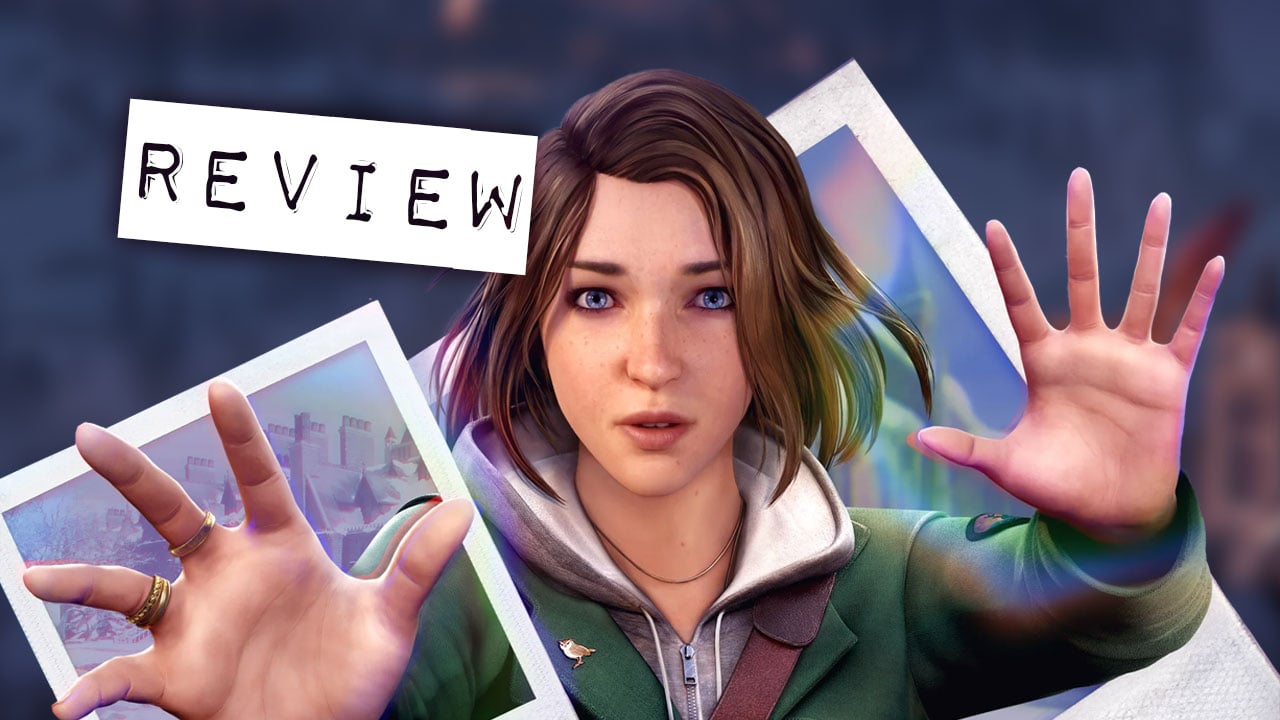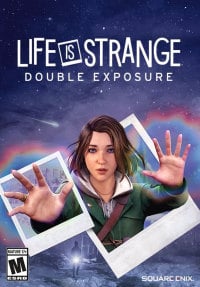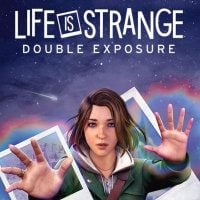Life is Strange Double Exposure Review: Undeveloped Film
Max Caulfield is back after meeting her in the first Life is Strange. Her return is not what you would expect it to be considering her new game’s story is not as compelling as the first.
The review is based on the PC version. It's also relevant to PS5, XSX version(s).

The Life is Strange series is known for taking the mundane aspects of life and adding supernatural elements to them to make them memorable stories worth telling. The first Life is Strange followed the story of Max Caulfield, an ordinary teenager in high school who one day gains the power to rewind time, a power that has devastating effects on the people she meets and eventually her whole world.
The sequel take place years after the events of the first game and tries to once again give us a mundane story worth playing, but this time that story feels a little too dull and confusing to leave us with a good imprint. While the original seamlessly blended the supernatural with the growing pains of being a teenager, this one feels clunky and has a hard time finding its flow. Not only that, but its story, like its gameplay elements, feels convoluted and leaves you wanting more.
College in New England
One of the strengths of Double Exposure is that it transports us to Caledon University, Max’s new school where she is now a photographer-in-residence, and gives us that snowy Vermont setting that feels believable. The game looks beautiful and provides us with a quintessential college campus complete with a quad, everyone’s favorite hang-out spot called the Snapping Turtle, and a Fine Arts Building where some lucky students have their art projects on display.
The various friends, students, and professors you interact with also have their own unique personalities and fit the game’s setting and the kinds of characters the series has tried to focus on over the years. Whether you hate it or not, nearly all the characters are minorities in some way or other and will occasionally express some sentiment of their personal life that contributes to their opinion on a subject or decision. It’s not suffocating or too political, but it is worth noting as the game has a very diverse cast with unique perspectives that make them feel like full-fledged characters without feeling like caricatures.
What also stands out among the rest of the game is how natural conversations feel and sound. Characters exchange banter in such a witty manner, joke around, and occasionally say some one-liners that will make you smile. You’ll be able to flirt with some and piss off others, but every conversation feels natural thanks to some clever writing and a cast of actors that sound like real people you want to get to know—well, some more than others. Plus, the game’s facial animations are so impressive that you can even see what someone thinks just by looking at their expression.
Despite these positive points, Double Exposure feels smaller than it should be with a setting that feels limiting. Caledon is supposed to be a top-ranked art school, but you don’t get to explore much of it. I would have loved to sit in on some classes or even seen more of Max’s world. She supposedly teaches classes as some students refer to her as Miss Caulfield, but you jump into the game near the end of the semester where it seems no one is going to class or doing homework. Instead, you only get to explore a handful of areas throughout its five chapters and you will often revisit some of them like the Snapping Turtle a little too often. Don’t these kids go to school?
- conversations between characters feel natural and are well portrayed;
- facial animations and overall visuals are impressive and bring its setting to life;
- Max’s powers are fun to use but could have been better implemented.
- repetitive gameplay in the first few chapters;
- too many plot holes that leave you with unanswered questions and even more questions to ponder;
- not as emotionally provocative as the other titles in the series.
Traveling Between Timelines
To the game’s defense, the story does kick off with the death of one Max’s friend Safi, which leads to mourning and eventually starts a series of events where Max discovers a new power. Instead of rewinding time, Max can now travel between two realities. One, known by the game as the Dead World, is the one where Safi is dead while the other, the Living World, is the alternate timeline where Safi is still alive. Max can “pulse” and see and hear the other world on command or head to specific spots on the map to swap between these two realities.
During the first few chapters, Max will be switching between realities to get clues as to who could have killed Safi. This means you will be using your new powers primarily for sleuthing. In one instance, you need to eavesdrop on some students, but because they won’t say anything if you’re around, you’ll need to go to the other timeline and pulse to hear what they are saying. In another instance, you’ll need to get access to a shady professor’s office in the Dead World, but it’s locked in that timeline. Once you’re inside in the Living World, you can conveniently switch to the other one and continue your snooping. It’s a fun feature, but here is where the game stumbles as it focuses too much on switching between timelines.
The first few chapters are just about digging for clues to the point where you begin to wonder who this Max Caulfield has turned into. She’s not like the one you played in the original, and feels almost deceptive to those around her just to find these clues that could or not get her closer to finding out who killed Safi. Her intentions are warranted, sure, but most of the game is centered around snooping through the tiny Caledon campus, looking for documents that relate to Safi, talking to someone to get some intel, and then doing it all again. Its gameplay gets repetitive, and because you are shifting from timeline to timeline talking to a different version of the same character, sometimes you’ll lose track of who is who.
There is one moment in the game where you need to snoop around an astronomy lab where the game throws in a cool puzzle for you to solve all while hiding from someone in the room by effectively switching through timelines. Here is where Max also debuts a new feature of her power that, to be honest, felt like one of the best moments in the entire game. If only more of the game was like this, but instead, you only see this power again in a cutscene down the road.
Discovering Plot Holes
The various plots you discover in the game surrounding Safi’s death and even ones unrelated to it also feel farfetched, and that’s saying something considering this is a series that has featured a lot of out-there plotlines. The whole premise of Life is Strange is to let you play through a game where normal life collides with the supernatural, but instead here you discover that nearly everyone’s lives collide with Safi almost too conveniently as she has something to do with nearly everyone in the game. She’s supposedly slept with this person, angered that professor, and threatened another to the point of getting a restraining order filed against her. It feels like the game is trying to make her Max’s new Chloe from the original and make her be that special person who has a lasting impact on her life, but in doing so it leaves behind a trail of confusion and disarray not to mention upsetting players who made a different choice in the first game.
Some of the plots in Double Exposure somewhat go out the window at times when you realize there isn’t more to them than what you are told. The last chapter tries to mess with your mind like the original one did, but it doesn’t have the same strength and ends up feeling vague. There was one moment in the game where a character magically disappears and you never see them again or even learn why they suddenly vanished. The game doesn’t explain this possibility of people just disappearing between timelines and just expects you to forget about him.
Life is Strange: Double Exposure has some strong points and features thought-provoking storytelling the series is known for, but it ultimately feels like a roll of film needing some development.
Find all our reviews on Metacritic and Opencritic.
Even Safi herself surprises you later on when she reveals something about herself that comes out of left field. With this revelation, you would think things make more sense, but they don’t. You don’t find out what happened to her, but you also have to decompress all the other information you just learned and sudden developments that just occurred in the last few hours of the game. And just when you think the game will finally resolve all of its loose ends, it ends without answering all the important questions you thought it would.
Final Thoughts
Double Exposure is evocative and makes you think about what you are playing, but it’s not as emotionally provocative like some of the other games in the series. It really needed to hurt more for me to feel it working. Its folksy soundtrack is the perfect backdrop and comes with songs about loneliness and angst, but the game doesn’t resonate with it. True to the series, you have moments where you can sit down and ponder your thoughts and get all melancholic, but what for? Safi is alive and the one moment in the story that tries to recreate the momentous and consequential storm of the first game comes across as confusing and rushed.
Life is Strange: Double Exposure brings back Max for another instance in her life where her powers grant her the means of righting a wrong, but instead she discovers an alternate timeline and events that remind her of her past. Instead of fully diving into it, the game ultimately shoves her past and present aside and tries to make you forget it leaving you with unanswered questions. It has some strong points and features thought-provoking storytelling the series is known for, but it ultimately feels like a roll of film needing some development.
Life is Strange: Double Exposure
Life is Strange Double Exposure Review: Undeveloped Film
Max Caulfield is back after meeting her in the first Life is Strange. Her return is not what you would expect it to be considering her new game’s story is not as compelling as the first.






